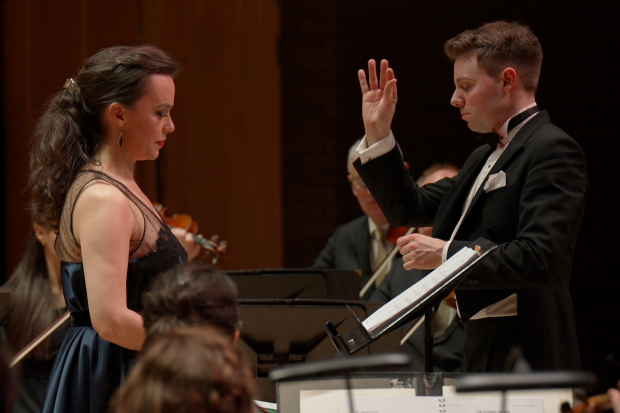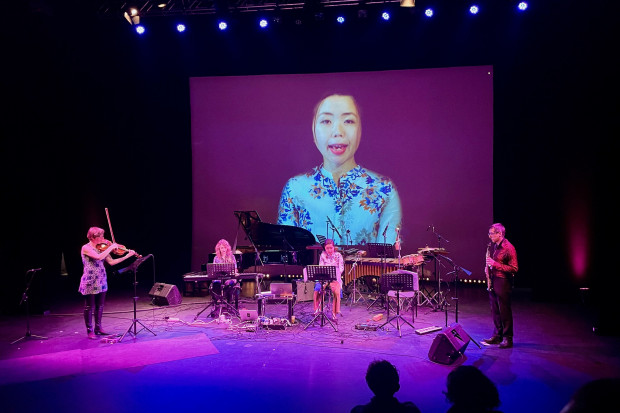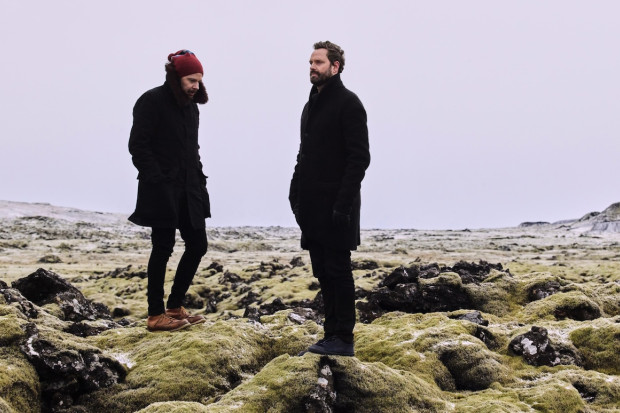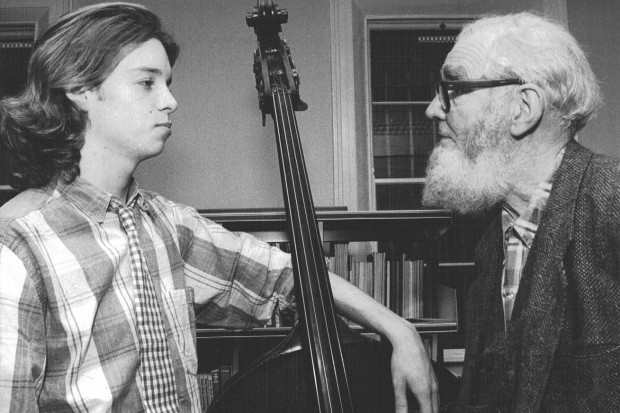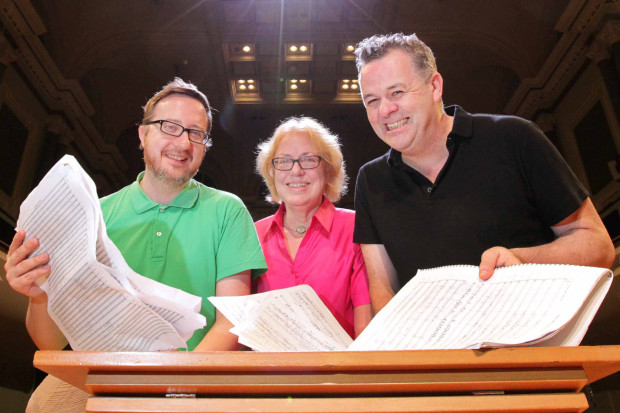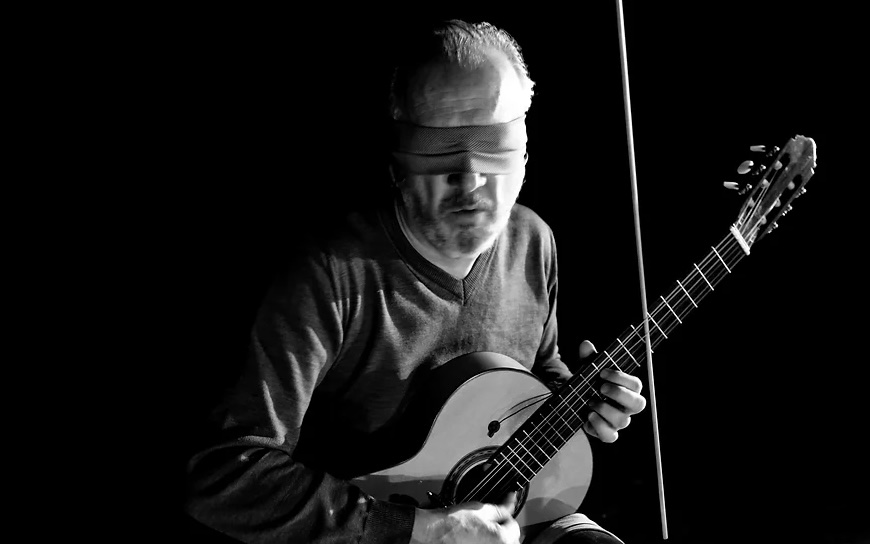
Benjamin Dwyer performing his work 'Knowing/Unknowing' (Photo: Pete Gomes)
Opening Up Music, History and Creativity
Music Autopsies: Essays and Interviews (1999–2022;), the recently published book by Irish composer, guitarist and musicologist Benjamin Dwyer, is a diverse collection of commentaries and conversations. In this work Dwyer uses the metaphorical idea of the ‘autopsy’, where music can itself be cut open and act as a catalyst to expose and embrace extra-musical thinking on discipline, genre and origins. The metaphor is also used to investigate in-depth research on the political and socio-cultural influences on work and the artists who make it. This collection contains sixteen essays and interviews that Dwyer divides into two sections – Part 1: Ireland and Beyond, and Part 2: Beyond Ireland – plus an introduction by Barra Ó Séaghdha.
The collection opens with a rather controversial exchange of letters published in the Irish Times in 2000 and 2001 in reference to the campaign to return the Irish stone artefacts known as Sheela-na-Gigs from the British Museum to their place of origin in Ireland. Dwyer’s ensuing comment on this gives the reader an insight into the importance he places on the exploration of political and social discourse in his work. In his essay ‘SacrumProfanum – mapping cultural damage through music’, Dwyer refers to ‘the persistence of a colonial-racist mindset’, giving the reader context for the extra-musical material that inspires Dwyer’s creativity. In his absorption into the Sheela-na-Gig topic, he refers to these female stone effigies as being ‘witnesses to historical traumas’. His exploration ranges from the Christian Church to the Roman Empire and their impact on the ancient world. It also refers to Russian philosopher Mikhail Bakhtin’s writing on archaic communities and their cultural and sacred practices and to Dwyer’s re-invocation of his own traditional Gaelic music heritage. He discusses how his musical encounters build on searching for cohesion in Gaelic music in a world of cultural misrepresentation. In the author’s opinion, he sees the popularised presentations of Irish traditional music as a ‘damaged musical syntax’. In the closing section of the essay, he refers to the sonic nature of the Sheelas’ rejection of patriarchal hegemony and colonial pillaging.
SacrumProfanum is also the name of an extended music composition by Dwyer, and a CD released last year. The accompanying booklet contains this essay, and it allows the reader to delve into his music with a deeper understanding of the subject.
This is a significant opening essay of the collection. It points to Dwyer’s approach to research and how it affects the development of his own composition. In his next essay in Part 1 of the book, ‘Second Glance at Ted Hughes’s Crow’, Dwyer delves into the historical context for Hughes’ poetry and discusses the poet’s effect on literary circles with his first major collection The Hawk in the Rain (1957). The author describes how Hughes’ early work contains ‘intuitive leanings towards folklore, myth and the symbolic’. These are themes that Dwyer observes closely in his own work. His immersion into Hughes’ Crow – The Life and Songs of the Crow (1970) – a forceful exploration of primitive themes, nature and life’s inescapable rawness, dark humour and dirtiness – is reflected in, and has influenced, the development of Dwyer’s musical narrative. There are also resonances with Hughes’ reference to Robert Graves’ The White Goddess and to the mythic tradition in W. B. Yeats’ poetry. Hughes’ work enables Dwyer to examine and pull apart these big subjects in his own musical language. Hughes’ intention to create a ‘super-simple and a super-ugly language’ is appealing and something that the author is drawn back to time and again.
Dwyer’s essay entitled ‘…eleven essays on Beckett, music and silence…’ shows another side to the composer in his sensitive response to the short poetic sentences that he has chosen from Beckett’s recognition of sound, structure, music and silence. His essay focusing on Beckett weaves in parallels with the work of Theodor Adorno, Morton Feldman and György Ligeti, and with artists Paul Klee and Mark Rothko. Dwyer presents a perceptive response to Ligeti’s ability to get to the heart of ‘dynamic nothingness’ through a process of reduction creating ‘… the sudden presence of an intense silence…’. This is perhaps the most thought-provoking essay in the collection.
Dwyer’s essay connecting James Joyce’s ‘Homeric tradition’ with composer Frank Corcoran’s obsession with pre-colonised Ireland attempts to trace links between Joyce’s literary aesthetics and Corcoran’s musical language. It successfully balances the abstraction of language in a convincing observation of the convergence of the disturbance of order in Corcoran’s music. He offers insight and precision into Corcoran’s sound world and by doing so reveals a sense of clarity and transparency in the music.

Dwyer performing with Paul Lytton at the Blow Out festival in Oslo in 2022 (Photo: Peter Gannushkin)
The artist in exile
In a discussion about his work with Jonathan Creasy in the essay entitled ‘in exile anyway’, Dwyer gives us a glimpse of his perception of sonic narrative and reflection with his use of text and vocal sonority. He discusses the nature of the artist in exile, having lived for a time in Spain, and in relation to Joyce and Beckett whose approach to language and linguistics has had a tremendous influence on Dwyer’s approach to structure in his music. He refers to his work Umbilical, inspired by the Oedipus myth, a large-scale composition that once again is underpinned by his conscious investigation of the feminist social and political themes that underpin the narrative. In this essay, Dwyer touches on how he perceives Ireland’s musical heritage, referring to a society where ‘There’s no real consciousness of contemporary music’. This is a topic that the writer discusses in depth in his 2014 book Different Voices. Dwyer clearly has much to say on the subject.
In addition to these in-depth historical, cultural and literature-focused pieces, which explore subjects that inspire and fascinate, there are a series of essays, interviews and conversations with composers. Considering the recent biopic feature film on Leonard Bernstein, Maestro, Dwyer’s essay on the composer, conductor and educator is topical. It touches on the anti-semitism felt by Bernstein and on the artistic climate in which he was emerging. Dwyer offers an appraisal of what he believed Bernstein achieved, but doesn’t offer commentary on Bernstein’s dubious decision to comply with the politics of the McCarthy era.
Dwyer’s interview with George Crumb and guitarist David Starobin is entertaining, but does not give the reader a great degree of insight into the composer. However, Starobin’s recollections about how Crumb’s music was received at US premieres does capture that immediate audience engagement and appetite for this new sound world that Crumb was creating at the time: ‘I remember specifically that audiences were kind of transfixed by the music … in addition to the very unusual effects that were in these pieces, I think there is some sort of deeper philosophical quality, a spiritual quality…’.
The interview with composer Kevin Volans titled ‘insight–deeper’ is Dwyer’s best essay. It is an engaging interview where Volans discusses his place in the contemporary music world, his heritage, his move to Germany from South Africa and his subsequent self-exile in Ireland. It gives space for Volans to talk about his relationship to landscape and to language. Having studied with Volans in Belfast in the 1980s, I was reminded in this interview of Volans’ pure engagement with sonority and rhythm and his care in inhabiting the physicality of performance within the music. Referring to European trained composers of his generation, Volans says: ‘… we were all taught that ALL parameters of sound were of equal use and importance in structuring a piece … I use dynamics structurally, not expressively, grouping forte and piano elements say, as well as register, tempo, tone colour, rhythmic structure, bar length … treating all of these parameters and meta-parameters as elements in an overlaid network of patterns.’ In the interview Volans reveals his acute perception of timbre and his ability to connect the visual with sonority in its absolute purity. Dwyer’s questions are tailor-made to elicit deeply engaging and thought-provoking responses. After reading this I feel compelled to explore Volans’ most recent work more fully.
The final topic in this book of musical autopsies is a series of essays and interviews about improvisation and improvisers. Dwyer’s phenomenal performance skills as a classical guitarist have allowed him to connect with performers, composers and improvisers including Barry Guy, Maya Homburger and Mats Gustafsson. Dwyer’s essays about the nature of improvisation reveal his acute observation and attention to detail in Guy’s compositions and Homburger’s interpretation. His conversation with Gustafsson contextualises the development of his improvisation skills and approach to form. In his final essay, ‘Toward a Transcendental Philosophy of Improvisation’, Dwyer discusses ‘what processes are at play when we play’. He embraces what Heidegger calls the ‘unconcealing’ in that which inspires creativity. He refers to a host of theories from Vedic philosophy to quantum physics, discussing how these affect understanding of consciousness related to music making. Dwyer concludes: ‘… creative intelligence hovers in the transient-immediate, negotiating instantaneously between the just passed and the yet-to be.’
Although it is often difficult to find a thread connecting these essays, there is undoubtedly a strong sense of authority and enquiry that is both stimulating and engaging. Dwyer’s final essay embodies the spirit of the performer, philosopher, improviser and composer, and is a summing up of his intentions to provoke and, in his own words, to ‘reach beyond the boundaries of our knowledge and, crucially, beyond.’
Music Autopsies: Essays and Interviews (1999–2022) by Benjamin Dwyer is published by Wolke Verlag. Visit www.wolke-verlag.de/musikbuecher/benjamin-dwyer-music-autopsies.
Published on 3 October 2023
Dr Deirdre Gribbin is a Northern Irish composer who lives in London. Her cello concerto 'Mná' will be premiered by Natalie Clein and the Ulster Orchestra in January 2024 for BBC Radio 3. Dr Gribbin is a Professor in Composition at the Royal College of Music.










